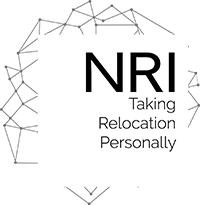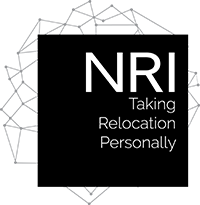
Recent job reports suggest that the employment market is at a historical low point and in many sectors, employers are struggling to fill the abundance of newly-created roles. This means that the competition for top talent is fierce. And sometimes a rapidly-moving market requires that companies quickly expand into new geographical areas in order to gain – or not lose – market opportunities.
Building talent internally at each location is optimal – but it’s also a plan that requires patience and long-term planning to pay off. So when key staffing needs can’t be met onsite, relocating existing employees with the needed skills and expertise to fill key positions can be a win-win for the corporate relocation program.
In this economy, the business case for mobilizing talent is excellent. And a relocation assignment can represent a plum career opportunity for employees eager to climb the career ladder and deepen their portfolio of experience. In spite of that, Human Resources departments still struggle to find candidates willing to accept relocation assignments, even when they can enhance a career.
There are several ways relocation professionals can meet this mobility challenge and help their organization find the best candidate to relocate for essential positions, especially if they look to talent resources that have been traditionally overlooked in the workplace. Four separate behavioral science studies came to the conclusion that people tend to associate with people who are similar to themselves. While the findings of this study may seem like minor behavior phenomena, this could have larger implications for recruitment and hiring from a modern, diverse, and multi-generational workforce.
Four Overlooked Groups
Women
Women make up 57 percent of college graduates but remain significantly under-represented in the corporate pipeline. Although female workforce participation has increased significantly over the past 40 years a recent study of Standard & Poor’s Composite 1500 stock index companies found that only 1 in 5 C-suite leaders is a woman.
The disparity is not for a lack of ambition. Women are just as interested in being promoted as men, and they ask for promotions at comparable rates. Yet all too often women are not offered the same career opportunities as their male counterparts. And, when it comes to relocation, women are just as likely to accept offers to relocate, but they are less likely to be offered the opportunity to do so by their companies.
Multiple Generations in the Workplace
One of the largest pools of talent for mobility professionals are Millennials (“Gen Y”), who by 2020 will account for half of the employee population. However, attracting this group of talented professionals requires being aware of the values and expectations of this generation – which are decidedly different to the values and expectations of the generations that preceded them. For example, career progression is Gen Y’s top priority, and they are keen to seize opportunities that will help them advance professionally even if – and sometimes, especially if – the opportunity means relocating.
At the same time, the skills and experience of older employees should be not be overlooked. The institutional knowledge and depth of experience they bring to expansion projects can help their organizations avoid costly mistakes. On some assignments, it may be necessary to create teams that span generations, and employers should review their relocation program with an eye to balancing contrasting expectations of candidates with different generational needs and expectations.
LGBTQ Employees
Organizations that understand the bottom-line benefits of diversity realize that LGBTQ inclusive workplaces can increase employee engagement by allowing employees to be authentic and spend less time self-editing. In turn, that reduces costs by decreasing turnover. Additionally, LGBTQ employees who feel accepted and included are going to be more focused, productive, and engaged. Professional advancement for LGBTQ employees is a particularly challenging area:in a 2017 study, 1 in 5 LGBTQ people reported being discriminated against because of their orientation when being paid equally or considered for a promotion. Mobility assignments convey to LGBTQ employees that their skills are equally valued and that their organization offers a path for advancement, without discrimination.
Diverse Employees
Despite decades of training programs designed to attract and retain a more diverse group of employees, leadership positions have remained predominantly white and male. Inadequate representation in leadership can lead to discriminatory policies ― and companies are becoming increasingly called to task by public disapproval of such lack of representation. Recent signs indicate that at least some organizations are increasingly embracing new efforts to ensure their office culture meets the same standards that their leaders espouse publicly.
But companies still have a long way to go. A sampling of 16 Fortune 500 companies found that seventy-three percent of the senior executives, men and women, were white. The rest were 21% Asian, 3% Latino/a, 2% black, 0.6% two or more races, 0.2% Native American and 0.1% Native Hawaiian or Pacific Islander.
And there is evidence that diversity is good for the bottom line: Companies in the top quartile for racial and ethnic diversity are 35 percent more likely to have financial returns above their respective national industry medians.
Mobility programs present an often overlooked opportunity to increase diversity and business performance by opening up relocation opportunities to a more diverse group of candidates. In today’s economy, companies that source candidates in overlooked and undervalued talent pools might just find a wealth of advantage over their competition.
To learn how NRI Relocation can better help you relocate this talent, please Contact Us for a complimentary consultation.


